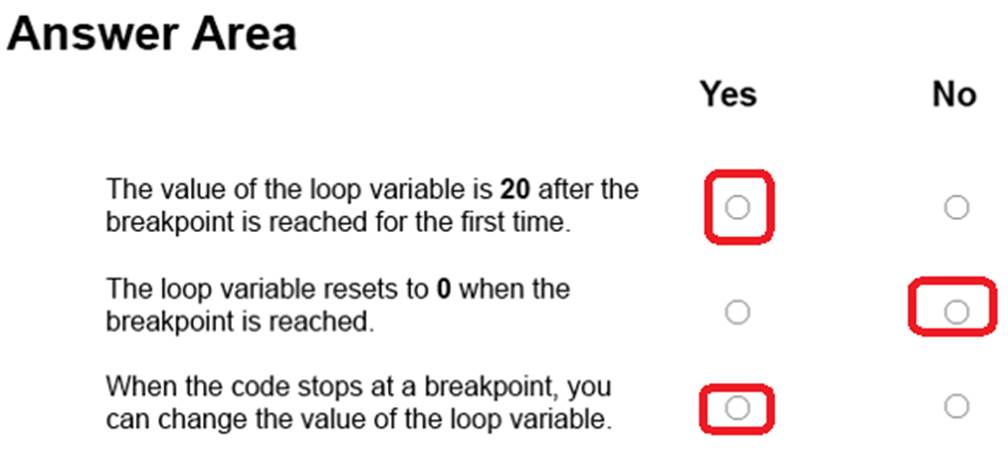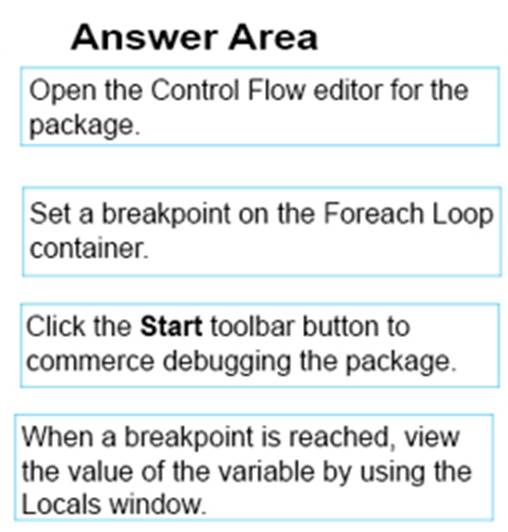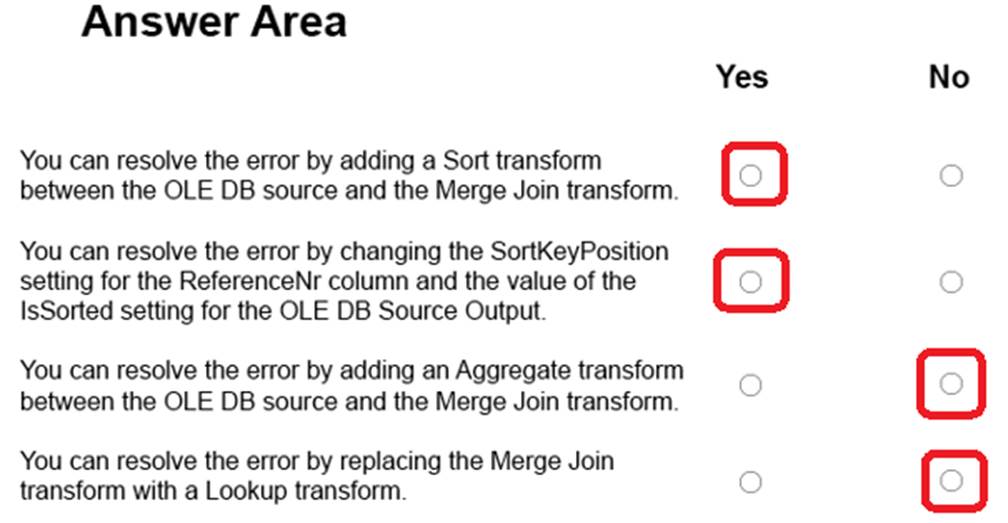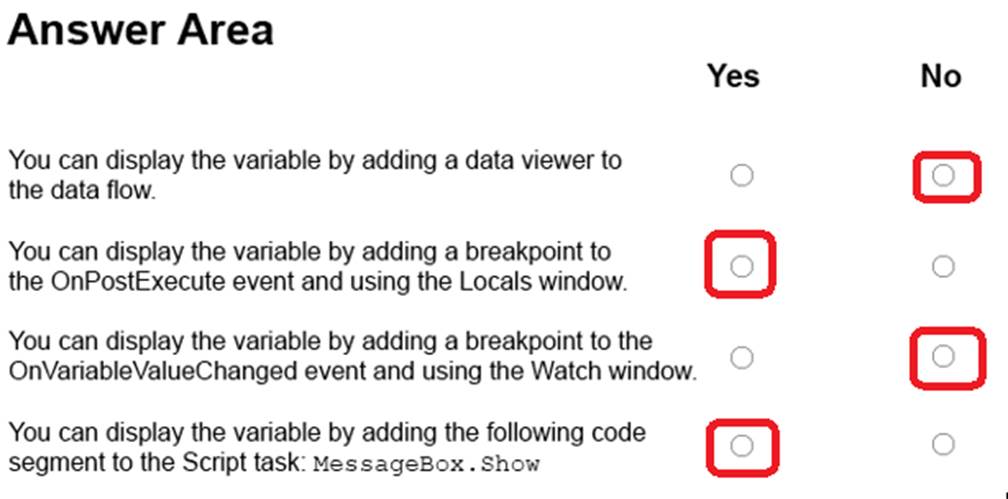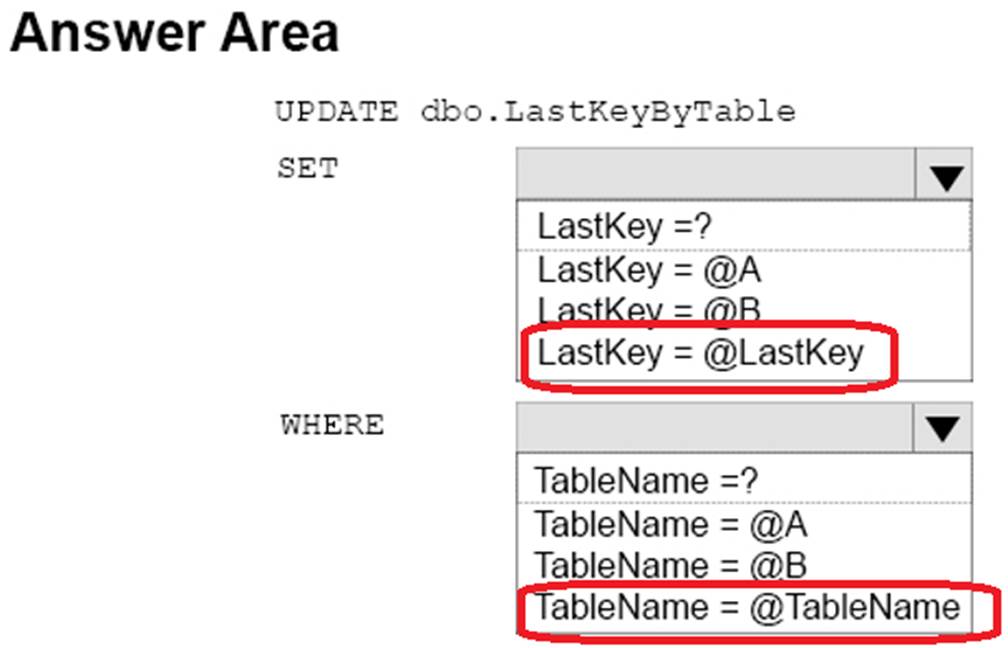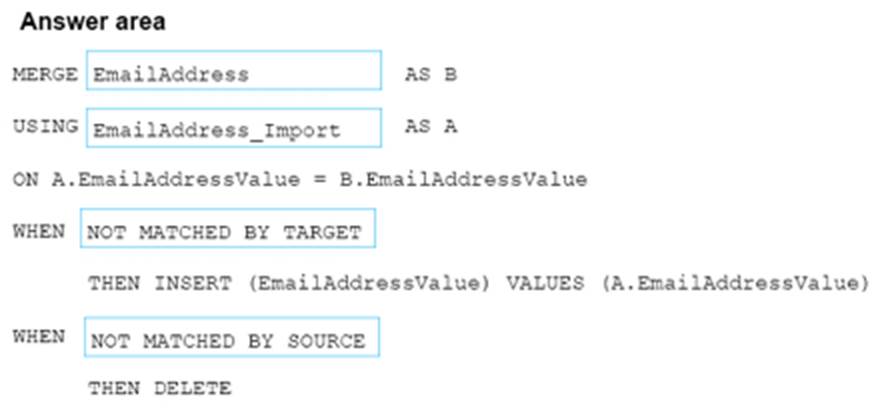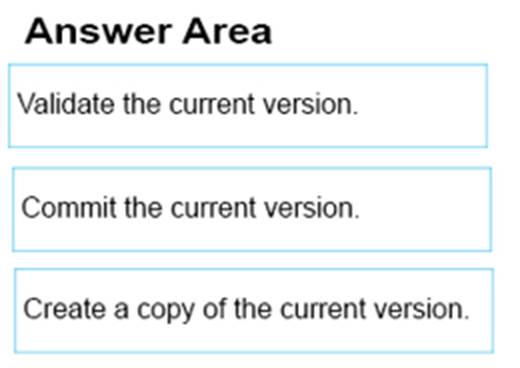Microsoft 70-767 Implementing a SQL Data Warehouse Online Training
Microsoft 70-767 Online Training
The questions for 70-767 were last updated at Jan 21,2025.
- Exam Code: 70-767
- Exam Name: Implementing a SQL Data Warehouse
- Certification Provider: Microsoft
- Latest update: Jan 21,2025
HOTSPOT
You have the Microsoft SQL Server Integration Services (SSIS) package shown in the Control flow exhibit. (Click the Exhibit button.)
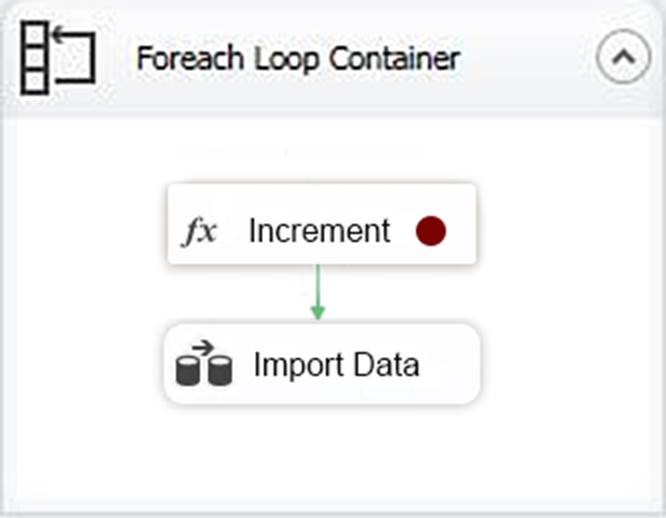
The package iterates over 100 files in a local folder. For each iteration, the package increments a variable named loop as shown in the Expression task exhibit. (Click the Exhibit button) and then imports a file. The initial value of the variable loop is 0.
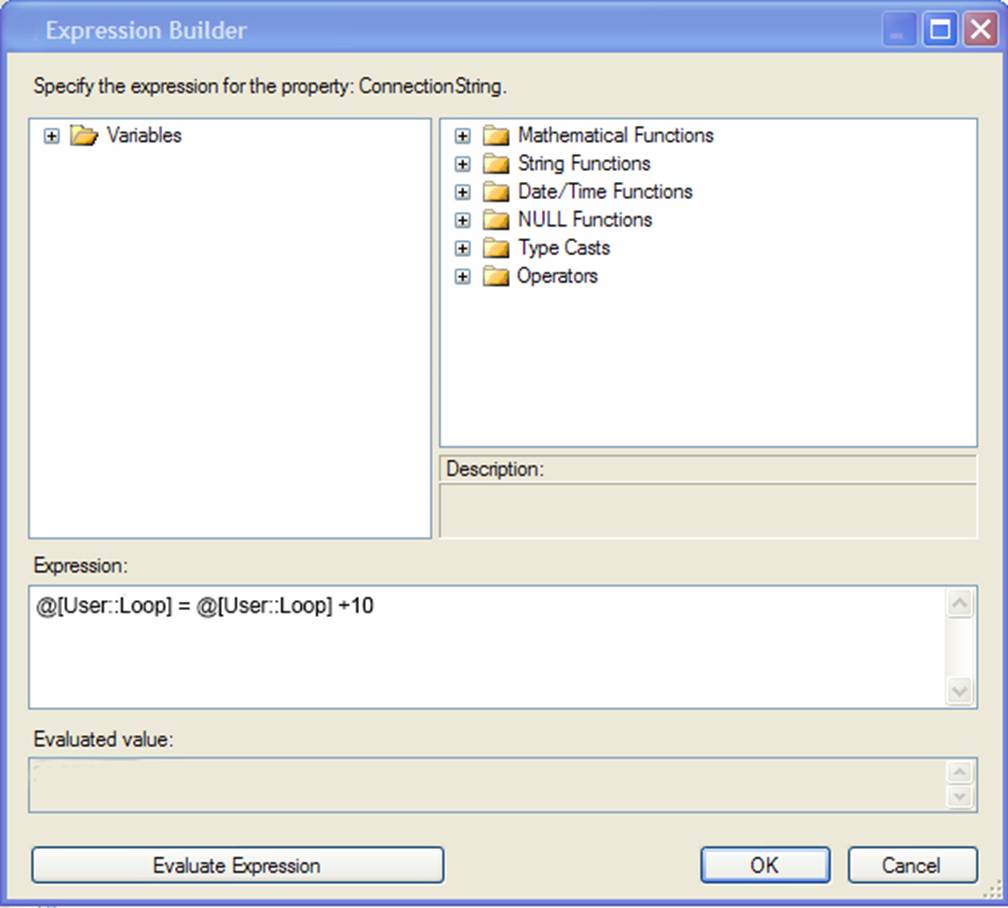
You suspect that there may be an issue with the variable value during the loop. You define a breakpoint on the Expression task as shown in the BreakPoint exhibit. (Click the Exhibit button.)
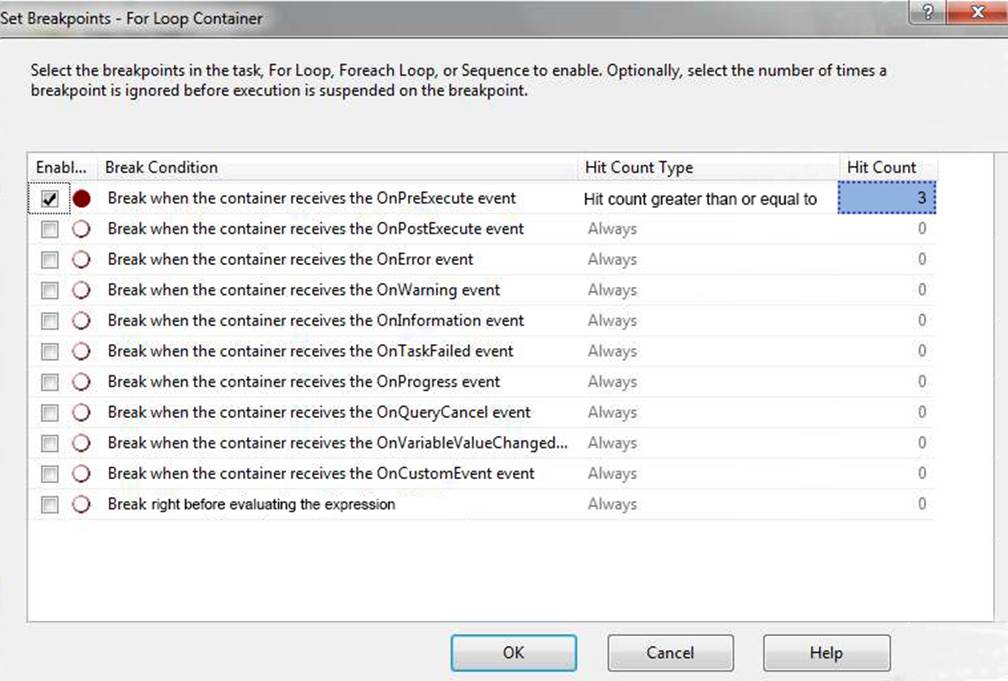
You need to check the value of the loop variable value.
For each of the following statements, select Yes if the statement is true. Otherwise, select No.
NOTE: Each correct selection is worth one point.
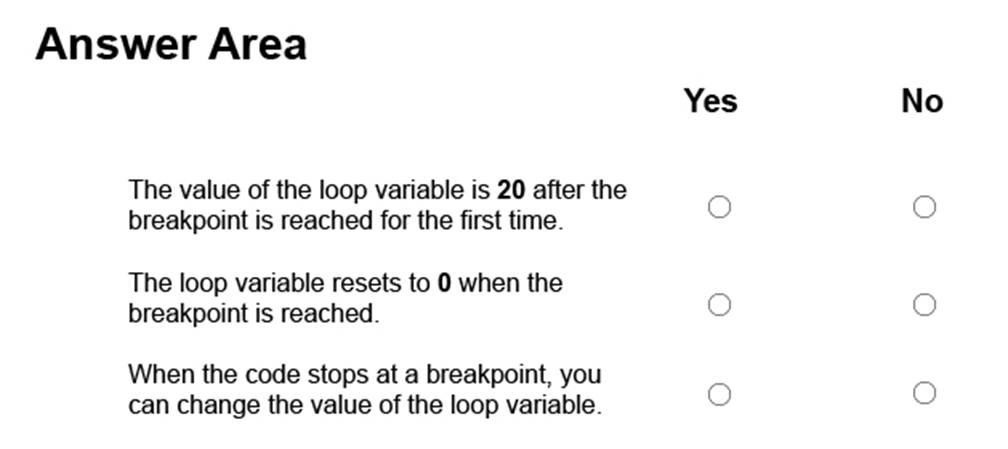
You have a Microsoft SQL Server Integration Services (SSIS) package that includes the control flow shown in the following diagram.
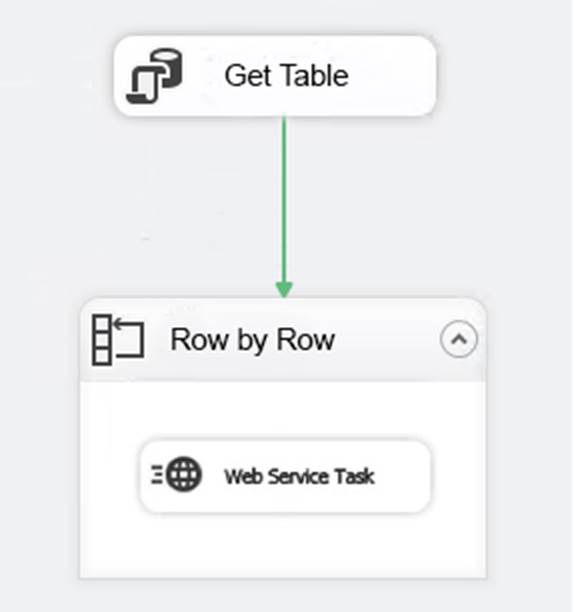
You need to choose the enumerator for the Foreach Loop container.
Which enumerator should you use?
- A . Foreach SMO Enumerator
- B . Foreach Azure Blob Enumerator
- C . Foreach NodeList Enumerator
- D . Foreach ADO Enumerator
DRAG DROP
You have a Microsoft SQL Server Integration Services (SSIS) package that loads data into a data warehouse each night from a transactional system. The package also loads data from a set of Comma-Separated Values (CSV) files that are provided by your company’s finance department.
The SSIS package processes each CSV file in a folder. The package reads the file name for the current file into a variable and uses that value to write a log entry to a database table.
You need to debug the package and determine the value of the variable before each file is processed.
Which four actions should you perform in sequence? To answer, move the appropriate actions from the list of actions to the answer area and arrange them in the correct order.
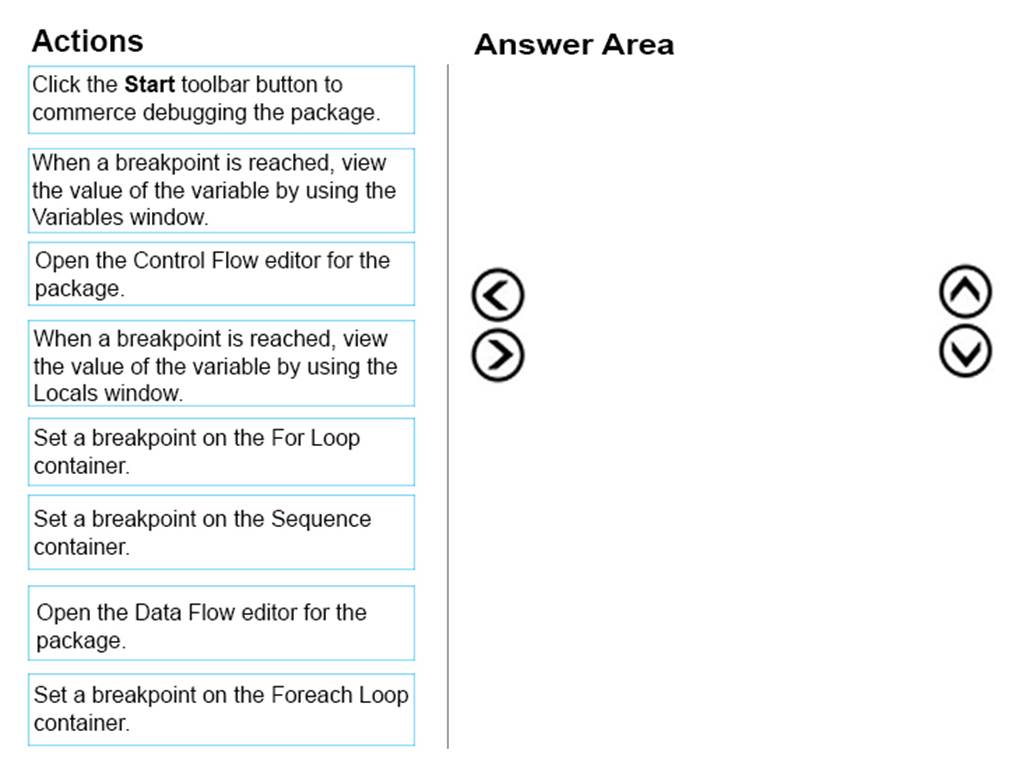
HOTSPOT
You create a Microsoft SQL Server Integration Services (SSIS) package as shown in the SSIS Package exhibit. (Click the Exhibit button.)
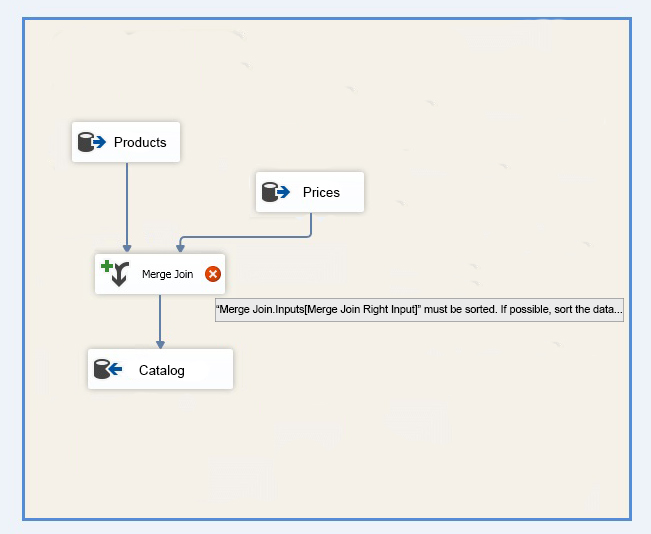
The package uses data from the Products table and the Prices table. Properties of the Prices source are shown in the OLE DB Source Editor exhibit (Click the Exhibit Button.) and the Advanced Editor for Prices exhibit (Click the Exhibit button.)
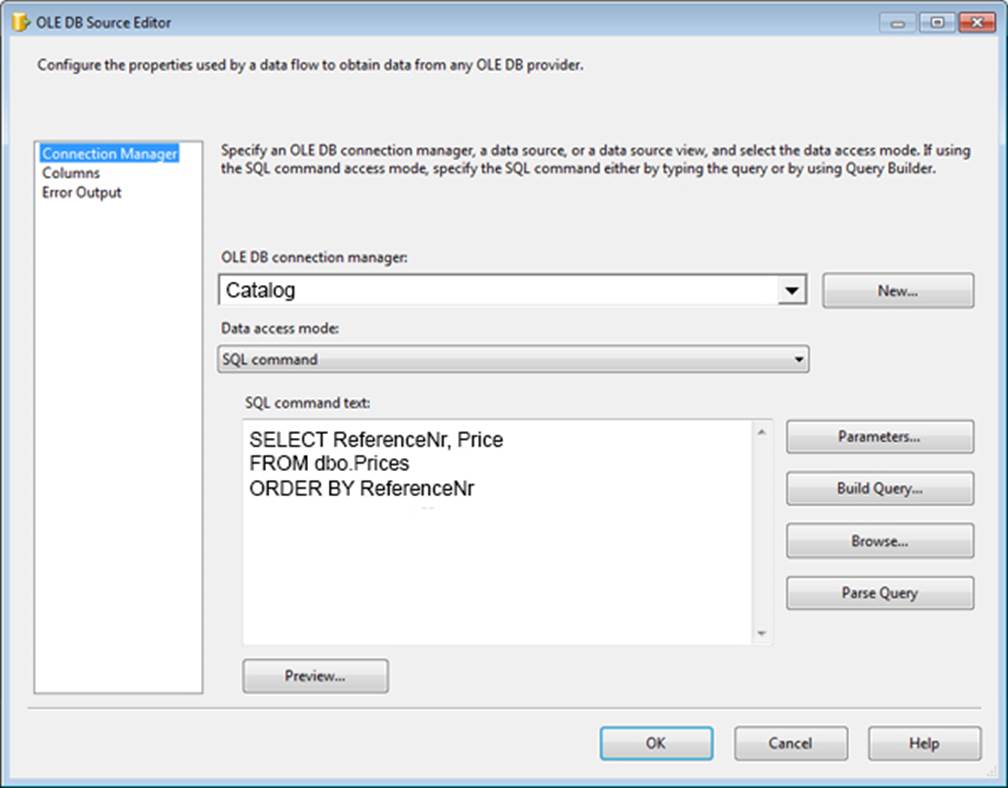
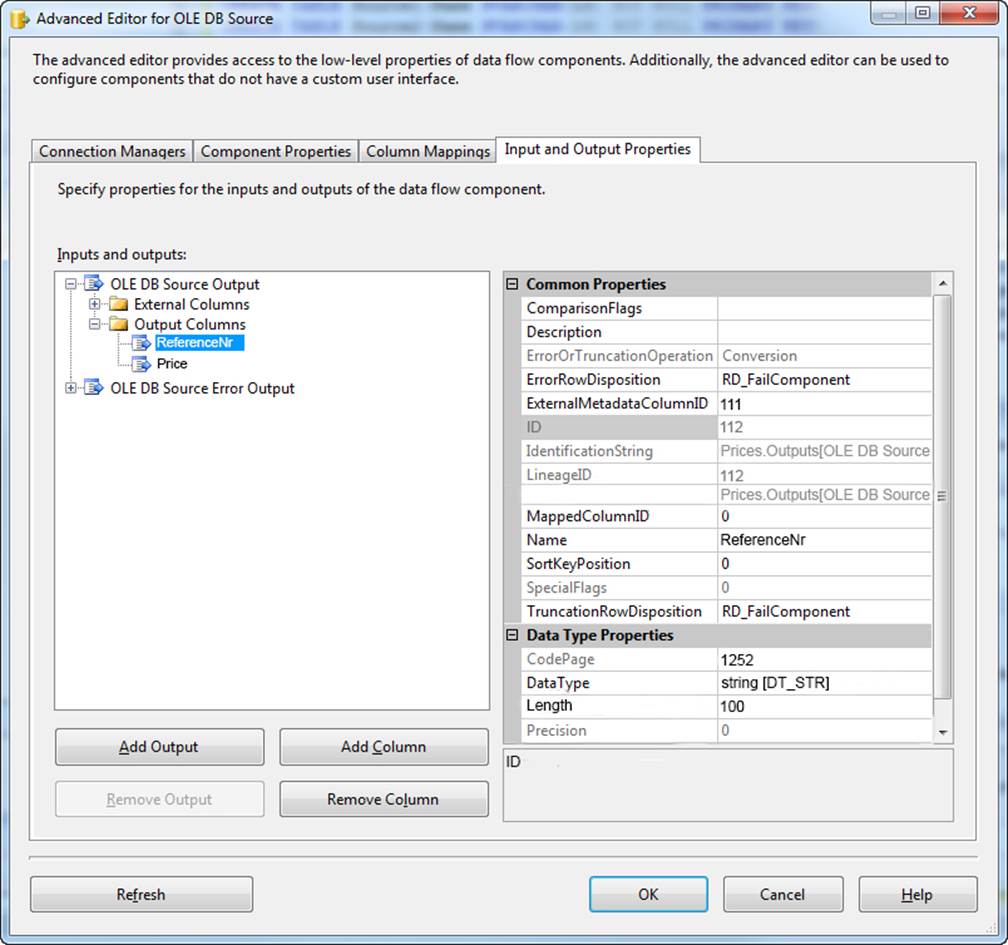
You join the Products and Prices tables by using the ReferenceNr column.
You need to resolve the error with the package.
For each of the following statements, select Yes if the statement is true. Otherwise, select No.
NOTE: Each correct selection is worth one point.
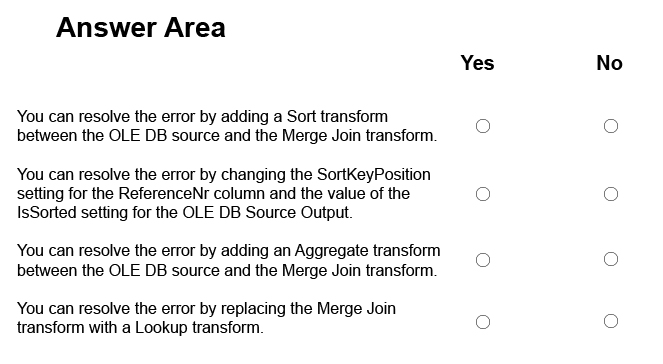
HOTSPOT
You are testing a Microsoft SQL Server Integration Services (SSIS) package. The package includes the Control Flow task shown in the Control Flow exhibit (Click the Exhibit button) and the Data Flow task shown in the Data Flow exhibit. (Click the Exhibit button.)
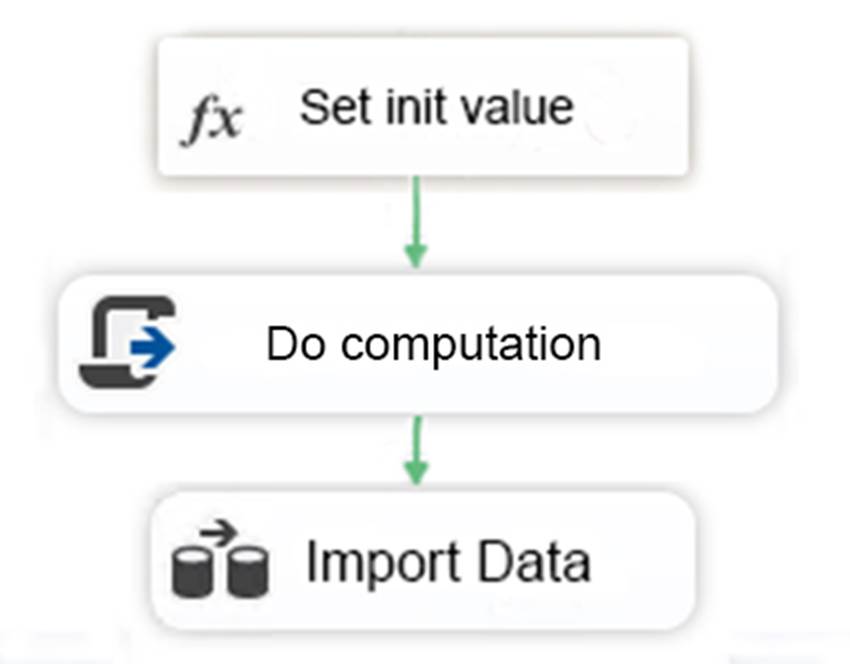
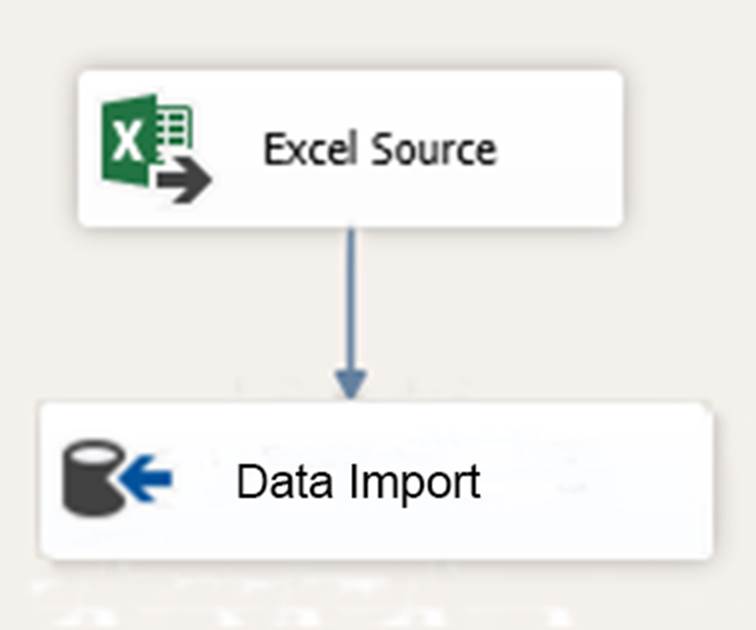
You declare a variable named Seed as shown in the Variables exhibit. (Click the Exhibit button.) The variable is changed by the Script task during execution.
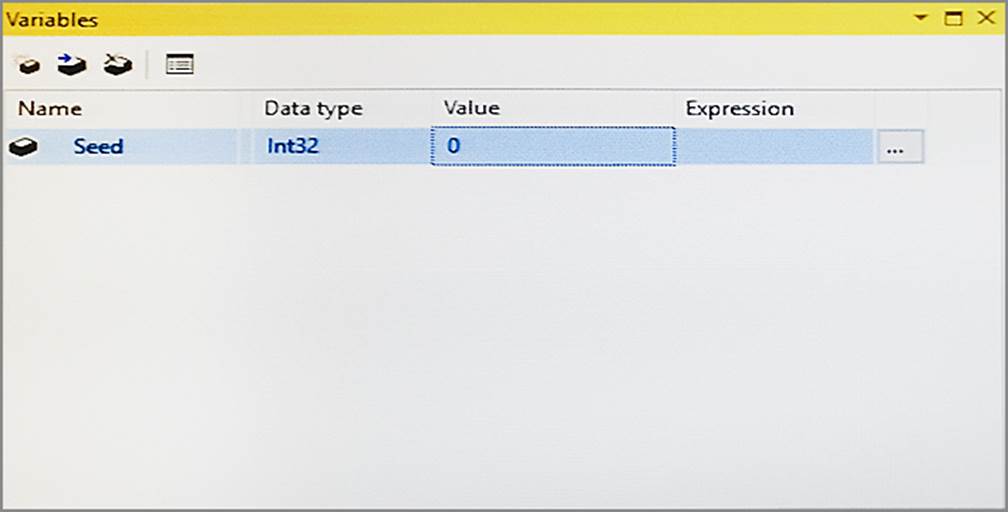
You need to be able to interrogate the value of the Seed variable after the Script task completes execution.
For each of the following statements, select Yes if the statement is true. Otherwise, select No.
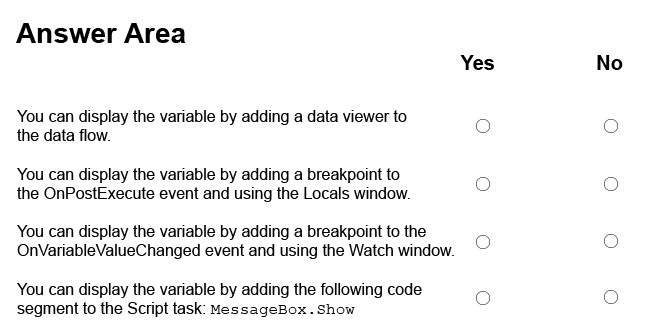
HOTSPOT
You have a database named DB1. You create a Microsoft SQL Server Integration Services (SSIS) package that incrementally imports data from a table named Customers. The package uses an OLE DB data source for connections to DB1. The package defines the following variables.

To support incremental data loading, you create a table by running the following Transact-SQL segment:

You need to create a DML statements that updates the LastKeyByTable table.
How should you complete the Transact-SQL statement? To answer, select the appropriate Transact-SQL segments in the dialog box in the answer area.
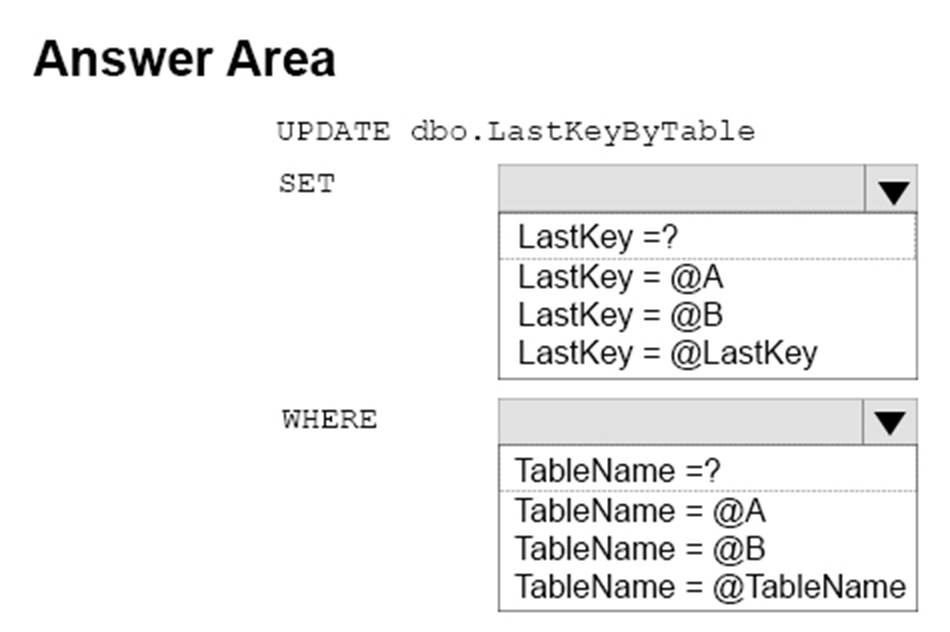
DRAG DROP
You deploy a Microsoft Server database that contains a staging table named EmailAddress_Import. Each night, a bulk process will import customer information from an external database, cleanse the data, and then insert it into the EmailAddress table. Both tables contain a column named EmailAddressValue that stores the email address.
You need to implement the logic to meet the following requirements:
– Email addresses that are present in the EmailAddress_Import table but not in the EmailAddress table must be inserted into the EmailAddress table.
– Email addresses that are not in the EmailAddress_Import but are present in the EmailAddress table must be deleted from the EmailAddress table.
How should you complete the Transact-SQL statement? To answer, drag the appropriate Transact-SQL segments to the correct locations. Each Transact-SQL segment may be used once, more than once, or not at all. You may need to drag the split bar between panes or scroll to view content.
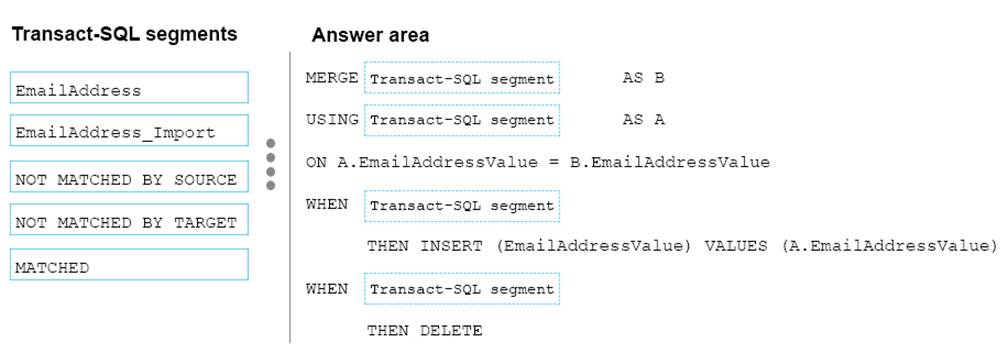
DRAG DROP
You administer a Microsoft SQL Server Master Data Services (MDS) model. All model entity members have passed validation.
The current model version should be committed to form a record of master data that can be audited and create a new version to allow the ongoing management of the master data.
You lock the current version. You need to manage the model versions.
Which three actions should you perform in sequence? To answer, move the appropriate actions from the list of actions to the answer area, and arrange them in the correct order.
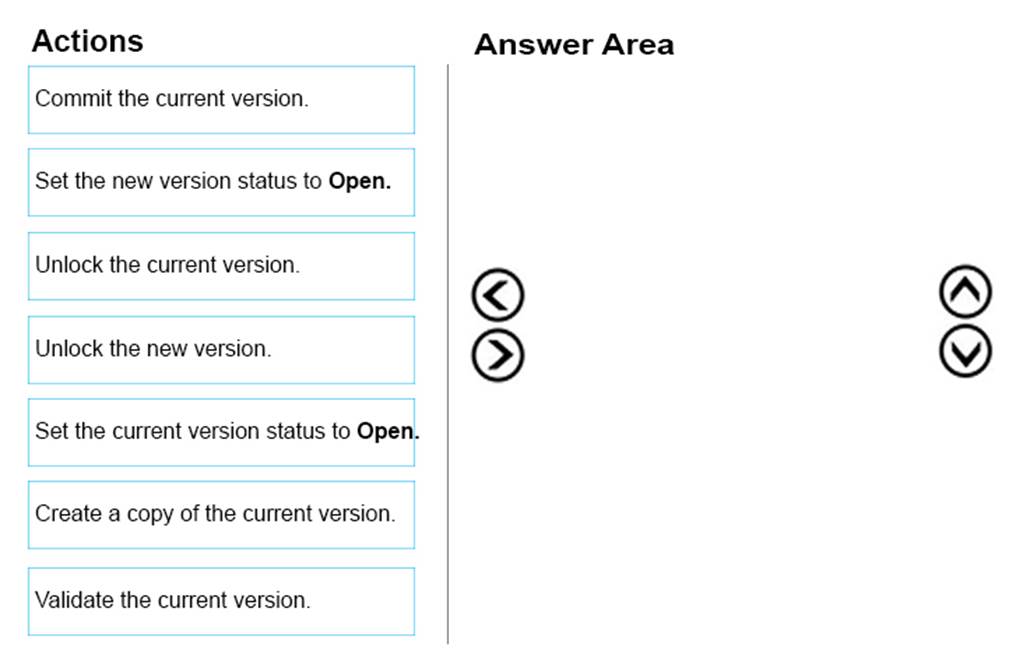
HOTSPOT
You have a Microsoft SQL Server Integration Services (SSIS) package that contains a Data Flow task as shown in the Data Flow exhibit. (Click the Exhibit button.)
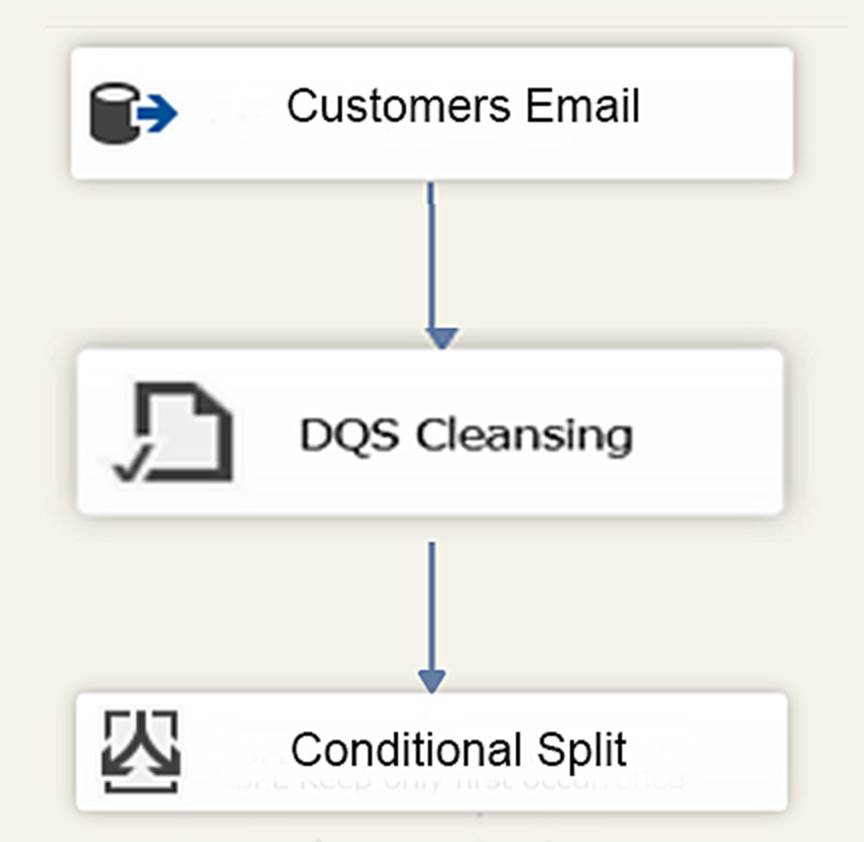
You install Data Quality Services (DQS) on the same server that hosts SSIS and deploy a knowledge base to manage customer email addresses. You add a DQS Cleansing transform to the Data Flow as shown in the Cleansing exhibit. (Click the Exhibit button.)
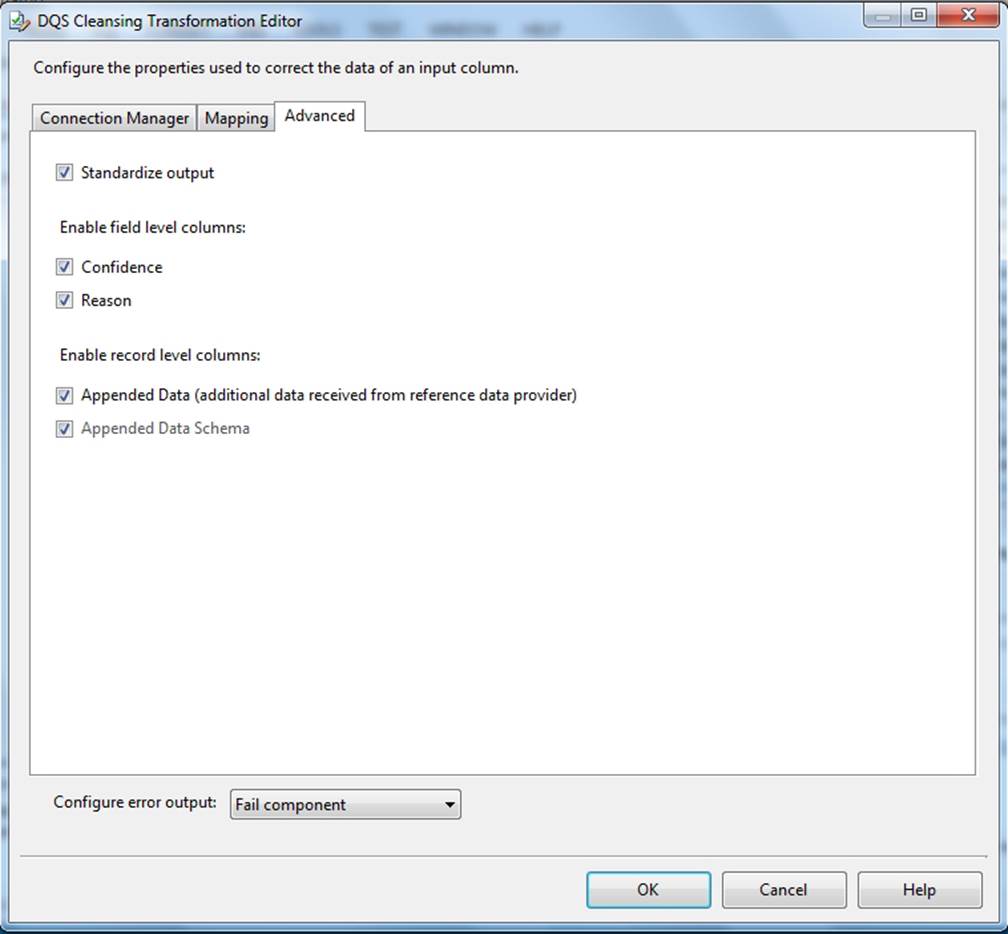
You create a Conditional Split transform as shown in the Splitter exhibit. (Click the Exhibit button.)
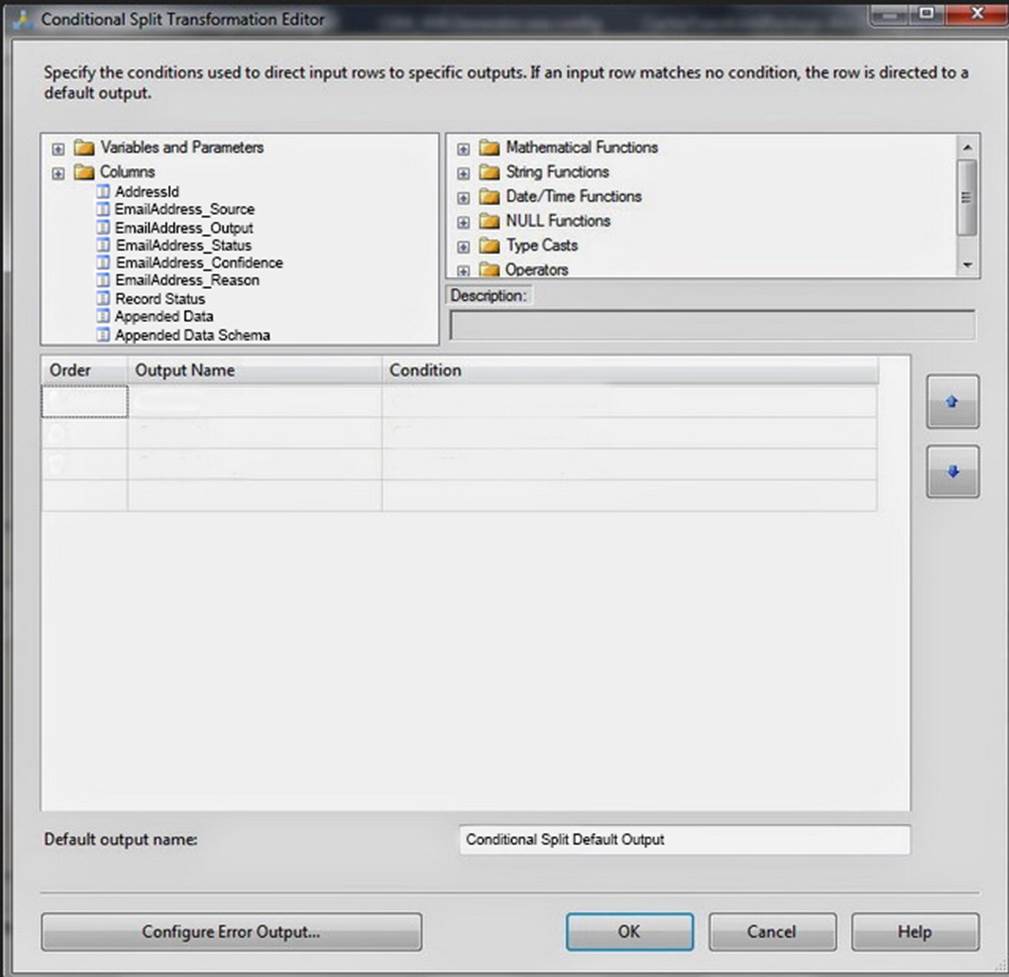
You need to split the output of the DQS Cleansing task to obtain only Correct values from the EmailAddress column.
For each of the following statements, select Yes if the statement is true. Otherwise, select No.
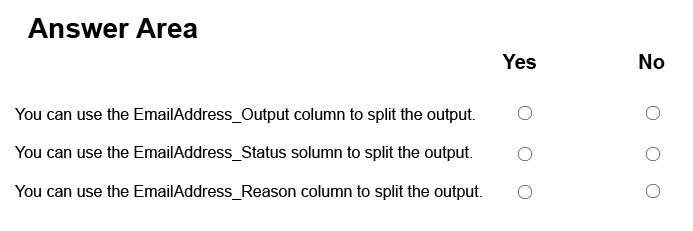
You have a data quality project that focuses on the Products catalog for the company. The data includes a product reference number.
The product reference should use the following format: Two letters followed by an asterisk and then four or five numbers. An example of a valid number is XX*55522. Any reference number that does not conform to the format must be rejected during the data cleansing.
You need to add a Data Quality Services (DQS) domain rule in the Products domain.
Which rule should you use?
- A . value matches pattern ZA*9876[5]
- B . value matches pattern AZ[*]1234[5]
- C . value matches regular expression AZ[*]1234[5]
- D . value matches pattern [a-zA-Z][a-zA-Z]*[0-9][0-9] [0-9][0-9] [0-9]?
Latest 70-767 Dumps Valid Version with 136 Q&As
Latest And Valid Q&A | Instant Download | Once Fail, Full Refund

